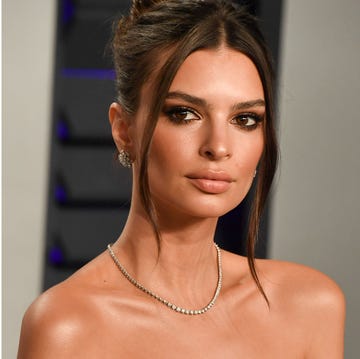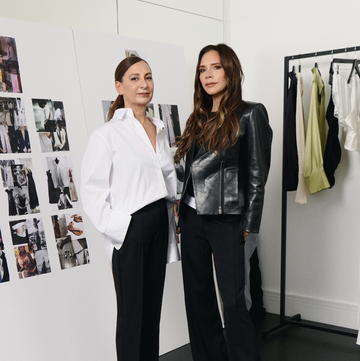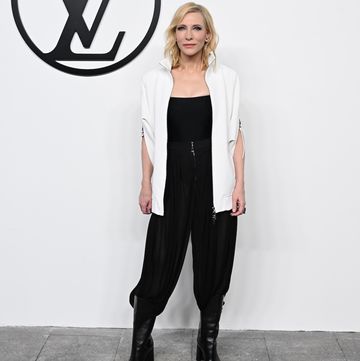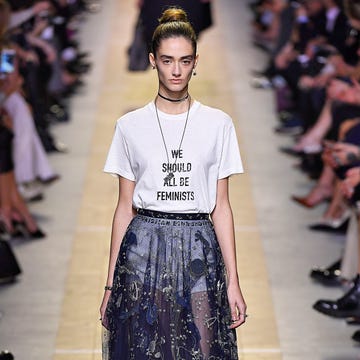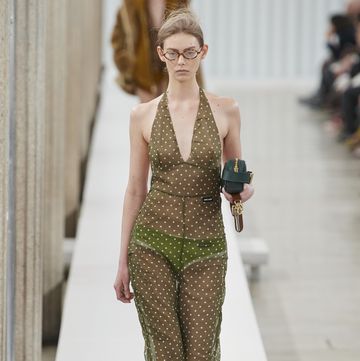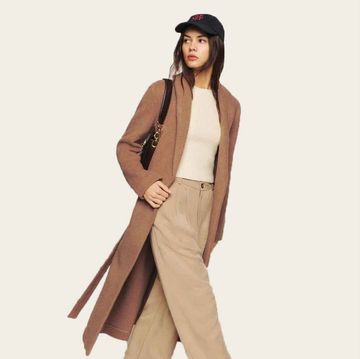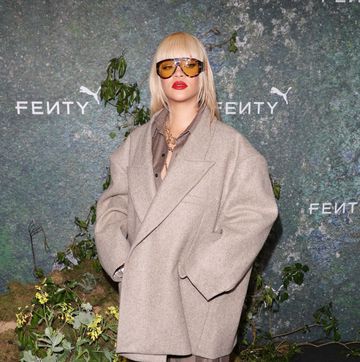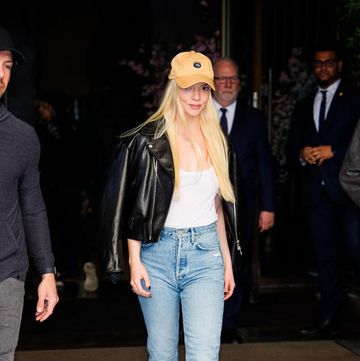Words: Lou Stoppard
From Kate Moss’ breasts to McQueen’s bare-chested warrior women, fashion has a long history of championing the nipple, yet social media has decreed it obscene. Lou Stoppard wonders why
Remember Helen of Troy? The daughter of Zeus had a face so beautiful that it launched a thousand ships (in other words, started a giant war – not quite so poetic, but still). The modern-day equivalent of Helen’s face, I think, might be Rihanna’s nipples. Or Anja Rubik’s nipples. Or Cara’s nipples. Or your nipples. Breasts have always had the power to send men into meltdown, but only recently have they become something of an unexpected battleground. The nipple, and its freedom to be unfettered by underwear on social media, has today become a symbol in the fight for equality in self-expression.
Instagram, for example, goes mad every time someone flashes a hint of one. Bum cheek? Not a problem. Gun? Fine! Man boobs? Go ahead! Entirely nude breasts with teeny-tiny plasters over their summits? Watch the ‘likes’ pour in. But a pencil-drawn self-portrait, posted by super-stylist Grace Coddington, with two tiny full stops for nipples? Instant account suspension. Rubik similarly found herself booted off in February, after posting a picture of herself modelling a see-through shirt in the Anthony Vaccarello show; then Rihanna, queen of the sexy selfie, quit the site altogether over topless pictures shot for French erotic magazine Lui. She later found them a home on Twitter, which has a slightly more progressive approach, but Facebook is as appalled by nipples as Instagram: Kendall Jenner wearing that sheerest of knits from the Marc Jacobs a/w 2014 collection was a step too far for its feed. Hence the Free The Nipple campaign: a demand that the social media powers that be stop treating a couple of fairly innocent square inches of female flesh (oh, haven’t you heard? Male nipples are fine) as an outrage.
Most of us are more comfortable with just a hint of nipple, rather than a full reveal. But the internet doesn’t do hints. Put a snatched picture online and it becomes an indelible full frontal, to be reviewed, reposted and zoomed in on. Social media, with its focus on instantaneous imagery, makes things even trickier: the sheer volume of traffic means there can be no grey areas when it comes to policing. Lines have to be drawn in thick, black marker – it’s either allowed, or it is not. And female nipples are not.
But fashion has always embraced the nipple: just look at the images on these pages, all taken from ELLE UK shoots over the past decade. And it’s not just the pages of glossy magazines celebrating the beauty of women’s bodies. On the runway, a nipple can slink by in a second, a suggestion of titillation veiled behind a sliver of silk or a buttoned-up evening jacket. It’s less obvious, and therefore more interesting. Style critic Tim Blanks calls it ‘the power of the peekaboo’. ‘No one understood it as instinctively as Yves Saint Laurent,’ he explains. ‘When he paired his androgynous Le Smoking tuxedo with a see-through blouse, he nailed fashion transgression for all time.’
Kate Moss also gets it. She’s appeared topless so many times that you almost wonder if she’s adored as much for her nipples as for her face. The images that catapulted her to fame – grungy black-and-white shots taken by Corinne Day for The Face – showed her practically starkers on a gritty English beach, breasts exposed, a bohemian crown of feathers upon head and nose curled up in a playful giggle. A waif (no surprise, really, as she wasn’t even 16 when shot), Moss became the poster girl for androgynous chic and kick-started a trend for fashion imagery showing skinny girls lounging in states of undress, staring into the camera. Were these girls’ nipples somehow more acceptable because of their youth? They seemed so androgynous that bare breasts were almost sexless. Nipples became normalised. It’s no wonder, then, that when Brazilian beauty Gisele Bündchen bounded on to the scene in the late Nineties, it caused such a stir: this was ‘the return of the sexy model’.
That pneumatic look remains popular today – see the success of Lara Stone, Kate Upton or any one of the Victoria’s Secret Angels. These girls don’t look boyish or childish, so their sexuality is more forceful, empowered and obvious. That’s why they’re so great at selling lingerie. But it’s hard to imagine even the most progressive style magazine popping a bare-breasted Upton on the cover. Rightly or wrongly, that would feel too Page 3.
Alexander Fury, Fashion Editor of The Independent, is more interested in these bolder breast displays than the sheer shirts and pussy bows that have become such a catwalk fixture since Saint Laurent pioneered them in the Sixties. ‘Alexander McQueen’s use of the bare breast was interesting. It wasn’t about seduction, it was about sexual aggression, about creating powerful women,’ he explains. Indeed, the bare breasts and pierced nipples that were exposed by torn lace and tatty suede at McQueen’s now-iconic Highland Rape show of a/w 1995 suggested wild, almost feral women, and had none of the man-baiting appeal of Victoria’s Secret models.
Fury’s other ‘top nipple moments’ are similarly controversial: ‘Kristen McMenamy topless at Gaultier Couture, s/s 1997. She wore a bib of gems, and nothing else above the waist, bar lace eyebrows. A year later, Thierry Mugler showed a Couture chiffon gown suspended from nipple rings. Those were ferocious. Which is really what the bared breast in fashion should be about: a call to battle, not a catcall.’
Though doesn’t all this suggest that, by and large, the fashion industry is just as regressive in its approach to the female body as those nerdy Instragram policemen, endlessly trailing through page upon page in pursuit of an offending areola? Today, whether it’s the sheer blouses we still see at Chloé and Valentino, or the tuxes at Stella McCartney and Margiela, the tendency is to half-disguise the nipple, to treat it as something taboo that must be at least slightly concealed, only to be fully revealed in a more intimate, private setting. It’s exactly the same thinking behind pasties – today a sex-store fixture – which were actually dreamed up to allow burlesque dancers to avoid breaking indecency laws.
Only pioneers or rule-breakers have really gone all-out in the support of the bare breast. The late, great Isabella Blow did a fashion story entitled Nipples In Naples in 2004, shot by Robert Astley Sparke. ‘Naples rhymes with nipples… so that was the concept for the shoot: a nipple had to be out in each shot,’ commented Blow at the time.
Photographer Ellen von Unwerth is another brave breast advocate. In her atmospheric photos, women become unique and strong characters, whether circus performers (apt, given that she worked for Germany’s Circus Roncalli as a teen), flamenco dancers or buxom farm girls. They’re energetic in their sexuality – vibrant, humorous and, most importantly, active.
That notion that women can be as dominating or formidable as men underpinned the work of photographer Helmut Newton, king of the fashion nude and a prolific nipple champion. His message: sexual curiosity is normal. Glance over his shots and you’re struck by the diversity of the bodies on show. What a difference from the uniform images of slim, passive women, with symmetrical breasts, neat labias and hairless bodies that we are bombarded with today. Thank you, porn.
So in a time when side-boob, Snapchat and post-sex selfies seem de rigueur, just how did we all get so freaked out by nipples? For actress and activist Lina Esco, the founder of the Free The Nipple campaign, the uproar is a sign of increasingly sexist body policing. It makes no sense, she says, that men can go topless in public and on social media, but women can’t. That’s why she’s fighting for a change to the rules while encouraging others to do the same, via topless flash mobs (pun intended?) and online protests. ‘The core message is equality. If a man can go topless, women should be able to. That’s what we’re asking for here – the same rights,’ she explains. The sentiment has struck a chord with everyone from Cara Delevingne, who wore a Free The Nipple T-shirt featuring a pair of breasts to the US Ambassador’s residence, to Scout Willis, who strolled topless through Manhattan for the cause. This is not just about the right to go entirely topless though. ‘Free The Nipple is an umbrella for many other issues, from breastfeeding to equal pay. If it takes me getting topless for people to hear what I have to say, then I’ll do it,’ says Esco. Indeed, quibbles about their principles aside, feminists have cemented the idea that whipping off your top is startling enough to be a valid form of political protest. Saves on making a banner, at least.
The idea that women’s nipples are ‘special’ or ‘sacred’ seems to be the root of the outrage. In reality, aren’t nips just like fingers or knees or belly buttons? The only reason we see them any differently is because they’ve been kept under wraps for so long – we’d be equally aghast by women’s ankles if some bright spark hadn’t hitched up her skirt a bit around 1900. Throughout history, breasts have always been a symbol of beauty and, ironically, given current nipple censorship, at points it was more shocking to expose bare shoulders or legs. Western art throughout the ages shows women posing with one breast revealed or both on show. In this context, largely because of their associations with the fashionable nude sculptures of classical Greece, they were a sign not only of attractiveness but also wealth or social position – think of it like the historical version of a good blow-dry. One trendsetter for loud and proud bosoms was Agnès Sorel, mistress to Charles VII of France, who started a fashion for exaggerated square necklines and fully revealed breasts at the French court around 1450. Her company apparently brought the king out of a period of depression, which is perhaps not a surprise.
Feminist theorist Laura Mulvey argued that art and cinema both shroud women in a sense of ‘to-be-looked-at-ness’ by con-stantly presuming the spectator is male. Her writing focused on the construction of pouty heroines in Fifties Hollywood, but she could equally have been referring to the nipple-bared selfies of today. As with Rihanna or Rubik, nip shots are often posted online by women. So surely to censor is to suggest that the internet is in some way designed for the male gaze? After all, 50% of the population can simply look down to see female nipples. So who is Instagram protecting? You wonder if that was the point Rihanna was making when she rocked up to collect her CFDA Style Icon Award in a totally sheer gown.
Whether you dare to bare, opt for sheer or keep yours tightly under wraps, it’s time to notice your nipples for the social and political uproar they can cause. After all, it’s always good to go about the day armed for battle, and some of your best ammunition is right there on your chest.

